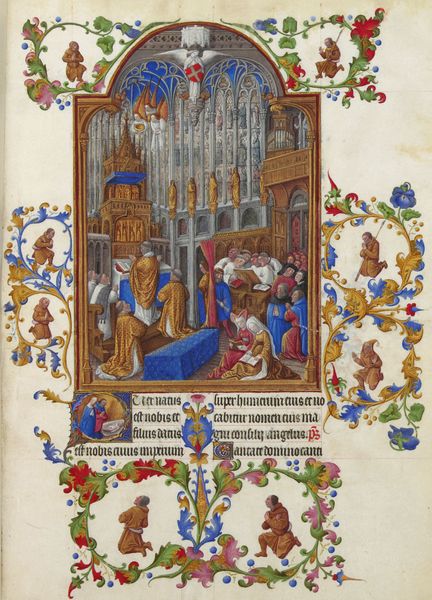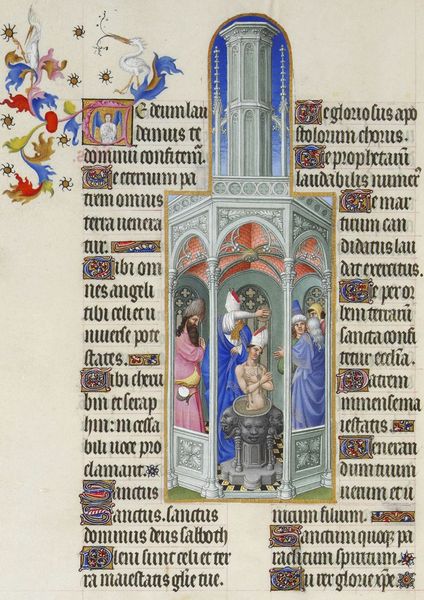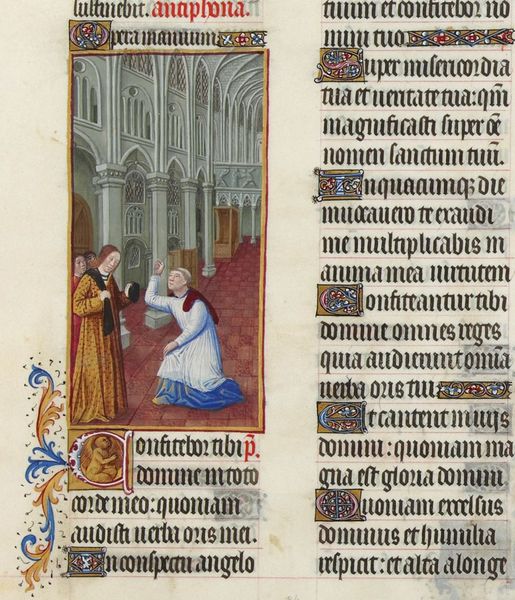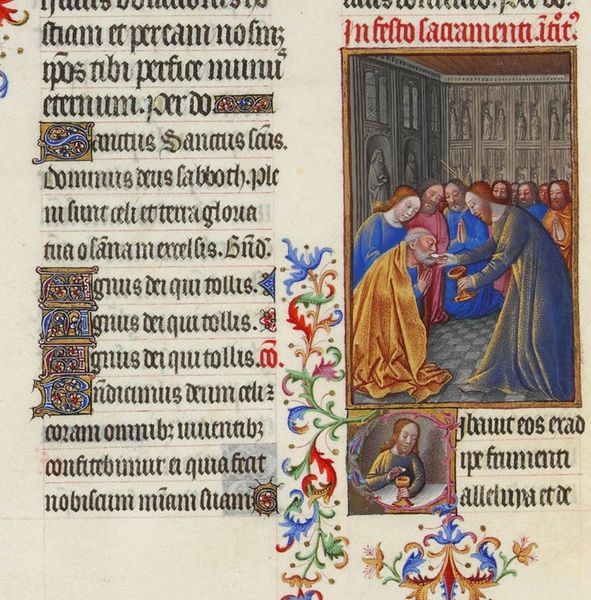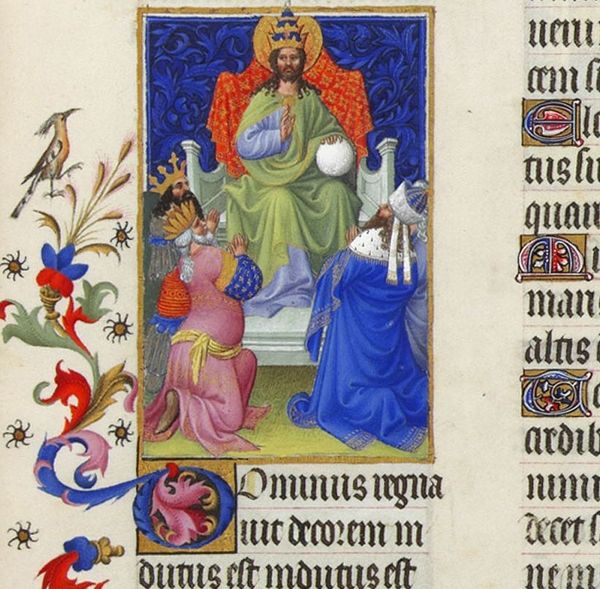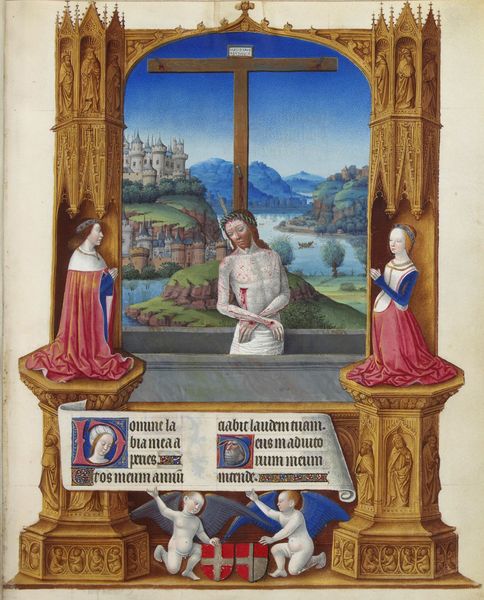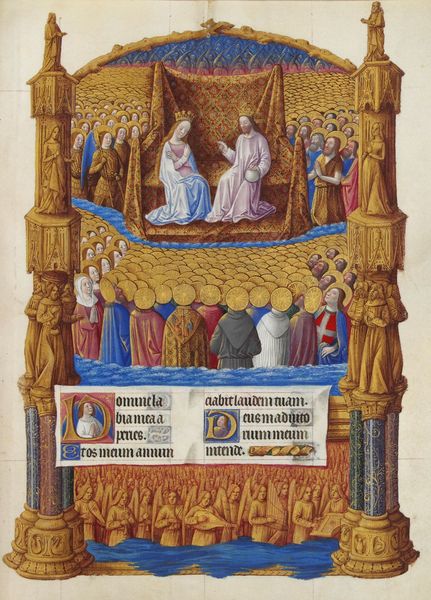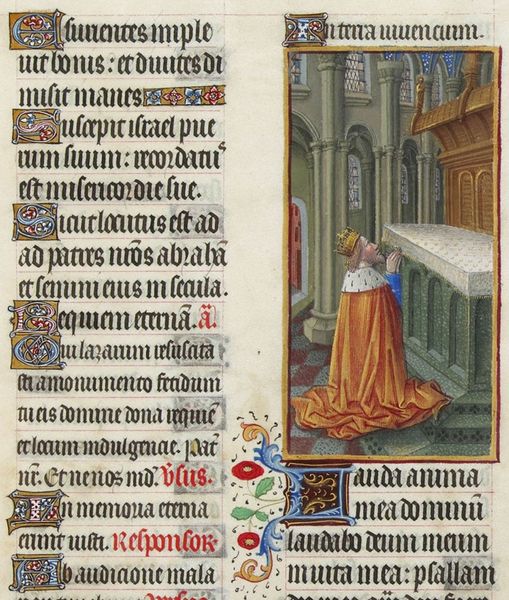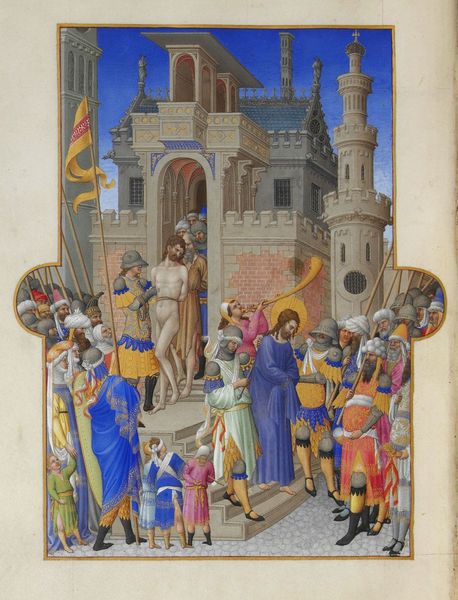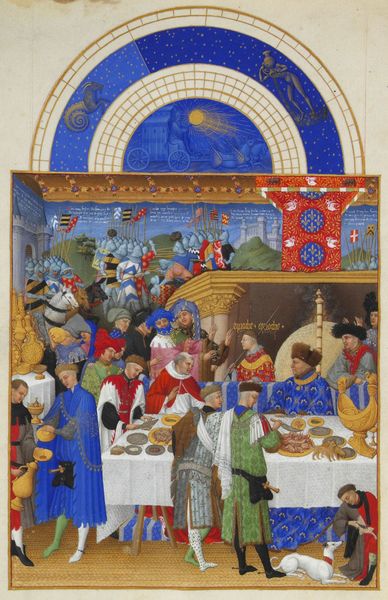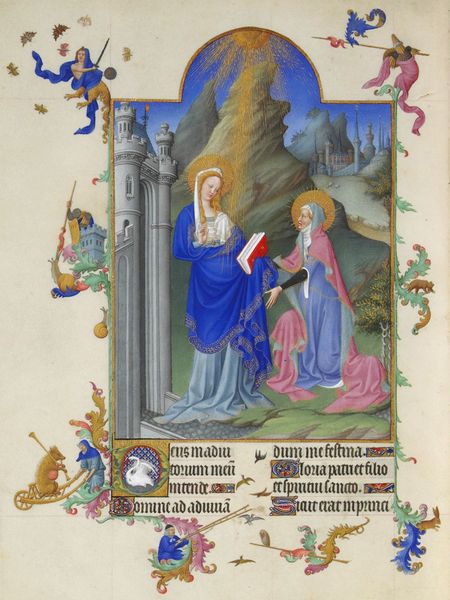
tempera, painting
#
medieval
#
narrative-art
#
tempera
#
painting
#
figuration
#
history-painting
#
international-gothic
#
miniature
Copyright: Public domain
Curator: Let's consider this miniature, "The Exaltation of the Cross." It is created using tempera and is attributed to the Limbourg brothers. The style harkens to International Gothic, with evident narrative and figurative elements. Editor: Oh, wow. It's all sharp angles and pious gestures. Very…intense. A bit claustrophobic, perhaps? Like a holy huddle under a rather ornate gazebo. Curator: Indeed, the architectural structure frames the central act of veneration. Note the color composition, the deep blues against the reds and golds, which function to heighten the visual drama and reinforce the theological importance. Editor: I'm caught by how flat everything feels, yet those figures manage a strange kind of depth. And those faces—so individualized, especially around the central table with the cross, yet they’re enacting such a ritualistic scene. Is there some kind of commentary happening? Curator: Your observation speaks to a critical tension within the piece. The miniaturist tradition requires a certain flatness, a denial of full perspectival depth, to accommodate detail and symbolic clarity. It allows the Limbourg brothers to display intricate textile patterns while focusing on the narrative rather than realism. Editor: The blue really pops, and then the gold leaf catches the eye. It's almost opulent in its austerity, a bit contradictory. I also see what looks like an allegorical figure emerging from illuminated script. Was this a medieval form of graphic storytelling? Curator: Precisely. Manuscript illumination, to which this belongs, integrated text and image. Each illuminated letter wasn't merely decoration but contributed to the narrative and thematic unity of the manuscript. Semiotics are very crucial here. Editor: So, we see layers upon layers of significance—not just a straightforward religious scene. The very materiality speaks of wealth, reverence, and also a particular cultural moment where these kinds of symbolic displays held immense power. Curator: You've intuited well the multilayered meaning. The very essence of late medieval art resided in such symbolic layering. Now what do you conclude from it all? Editor: I get the impression that beyond the obvious religious declaration, it acts as a status symbol, underscoring a dedication of patron piety and worldly power. Thank you for shedding light on the complexities of this fascinating miniature. Curator: The pleasure was all mine. Looking closely can reveal entire worlds in the microcosm of a page.
Comments
No comments
Be the first to comment and join the conversation on the ultimate creative platform.
